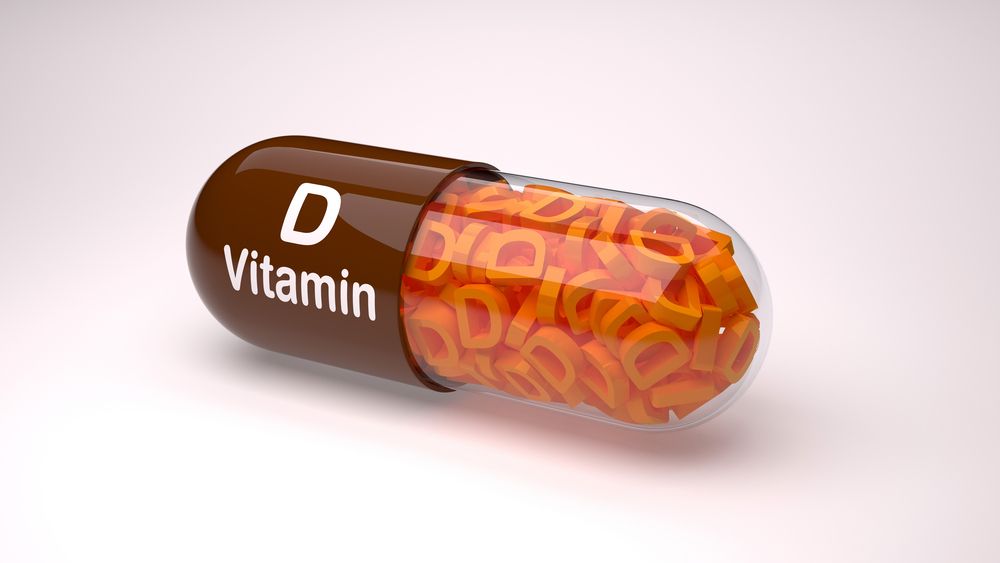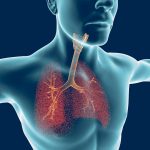Vitamin D Eases Lung Fibrosis by Blocking RAS Pathway, Study Finds

haryigit/Shutterstock
Treatment with vitamin D’s active form lessened lung scarring, and significantly reduced the levels of fibrotic markers in a mouse model of idiopathic pulmonary fibrosis (IPF), a study reported.
Notably, these benefits were associated with vitamin D’s suppression of the renin-angiotensin system (RAS), whose chronic activation promotes the production of pro-fibrotic molecules and the development of lung fibrosis (scarring).
Losartan, an approved blood pressure medication that works by suppressing RAS, also eased fibrosis in the animals’ lungs.
These findings shed light on the mechanisms behind vitamin D’s previously reported anti-fibrotic properties and suggest that vitamin D supplements and RAS-suppressing therapies may help to manage IPF, the researchers noted.
Their study, “Vitamin D suppresses bleomycin-induced pulmonary fibrosis by targeting the local renin–angiotensin system in the lung,” was published in the journal Scientific Reports.
IPF, a form of pulmonary fibrosis with no clear cause, is characterized by excessive wound healing that leads to fibrosis and increased stiffness of lung tissue, making it difficult for patients to breathe.
A growing number of studies have described several non-classic functions of the vitamin D hormone, besides its well-known role in regulating calcium balance and bone health. The sunshine vitamin, as it is often called, is known to also have antioxidant, anti-inflammatory, and anti-fibrotic effects.
Previous research associated vitamin D deficiency with a higher risk of death among IPF patients, and showed that oral vitamin D supplementation can reduce lung fibrosis in a mouse model.
However, the mechanisms by which vitamin D exerts its anti-fibrotic effects remain largely unknown.
A team of researchers in the U.S. and China found strong evidence indicating that vitamin D’s anti-fibrotic action involves RAS, a signaling pathway mainly known for its role in regulating blood pressure, fluid and salt balance in the body. RAS is also involved in fibrosis.
Notably, angiotensin II (Ang II), the main effector molecule of RAS signaling, “is well known to have potent pro-inflammatory and pro-fibrotic activities, which are mediated by angiotensin receptor type 1 (AT1R),” the researchers wrote.
The team had previously shown that mice genetically modified to have chronic RAS activation spontaneously developed progressive lung fibrosis. In the current study, the researchers used a mouse model of induced IPF to assess the effects of vitamin D on lung fibrosis.
They found that treatment with paricalcitol, an active form of vitamin D with low calcium-related activity, prevented disease-associated weight loss and significantly lessened lung fibrosis and the levels of fibrotic markers — in some cases, reaching levels seen in healthy mice.
Vitamin D’s protective role was also supported by mice that, after being fed a low-vitamin D diet and developing vitamin D deficiency, had more severe weight loss and lung scarring than those ingesting a sufficient amount of the vitamin. The vitamin D-deficient diet by itself was also found to promote lung fibrosis in healthy mice.
Further analyses revealed a significant increase in the levels of RAS-related molecules, such as renin, Ang II, and AT1R, in the lungs of the IPF mouse model relative to healthy mice, suggesting a strong fibrosis-associated RAS activation. Notably, this activation was significantly blocked in paricalcitol-treated mice.
Treatment with losartan — a medication for high blood pressure that blocks AT1R — also reduced weight loss, substantially lessened lung fibrosis, and significantly blocked TGF-beta 1 induction in the lungs of vitamin D-deficient, IPF-induced mice. TGF-beta 1 is a known driver of pulmonary fibrosis.
The active form of vitamin D hormone was also found to markedly suppress the pro-fibrotic effects of TGF-beta 1 and Ang II in lab-grown mouse lung cells.
These findings “strongly suggest that vitamin D mitigates lung fibrosis by blocking the activation of the lung RAS in this mouse model of IPF,” the researchers wrote.
“The therapeutic implication of this conclusion is that low calcemic vitamin D analogs [similar molecules] and anti-RAS [therapies] may be useful for the management of human IPF,” the team wrote.








